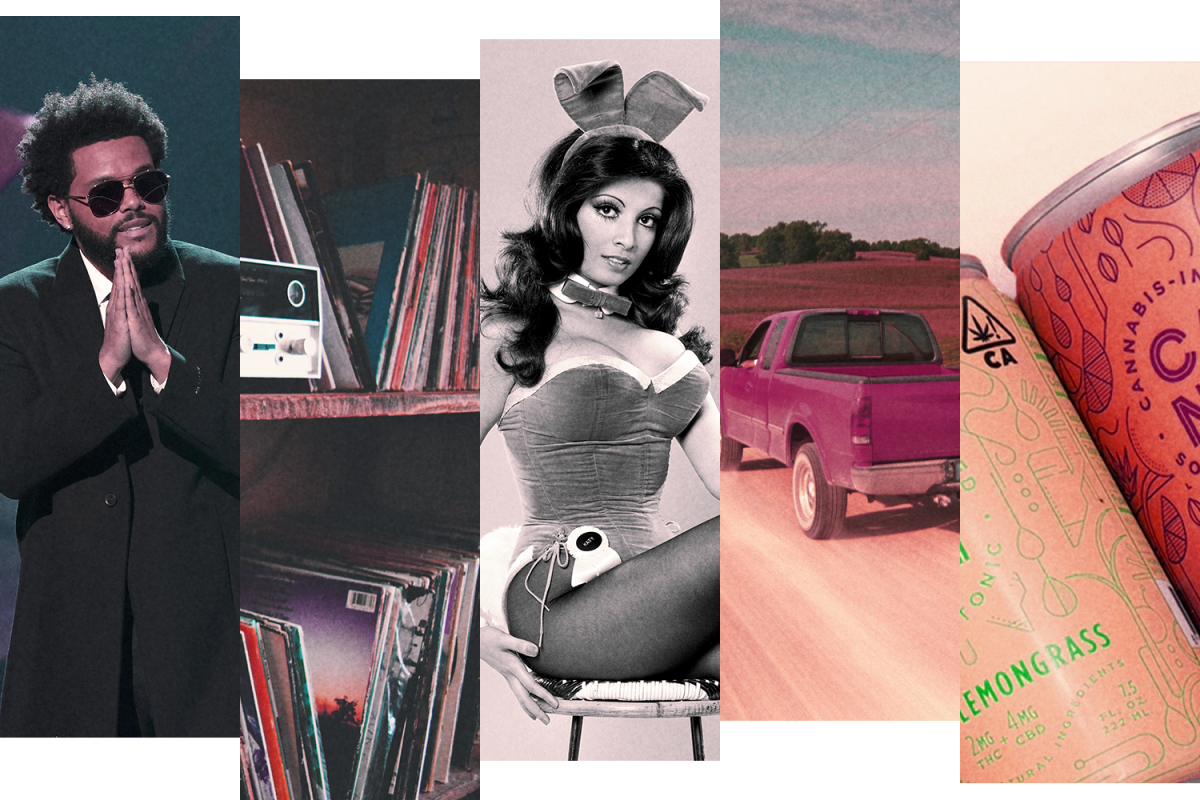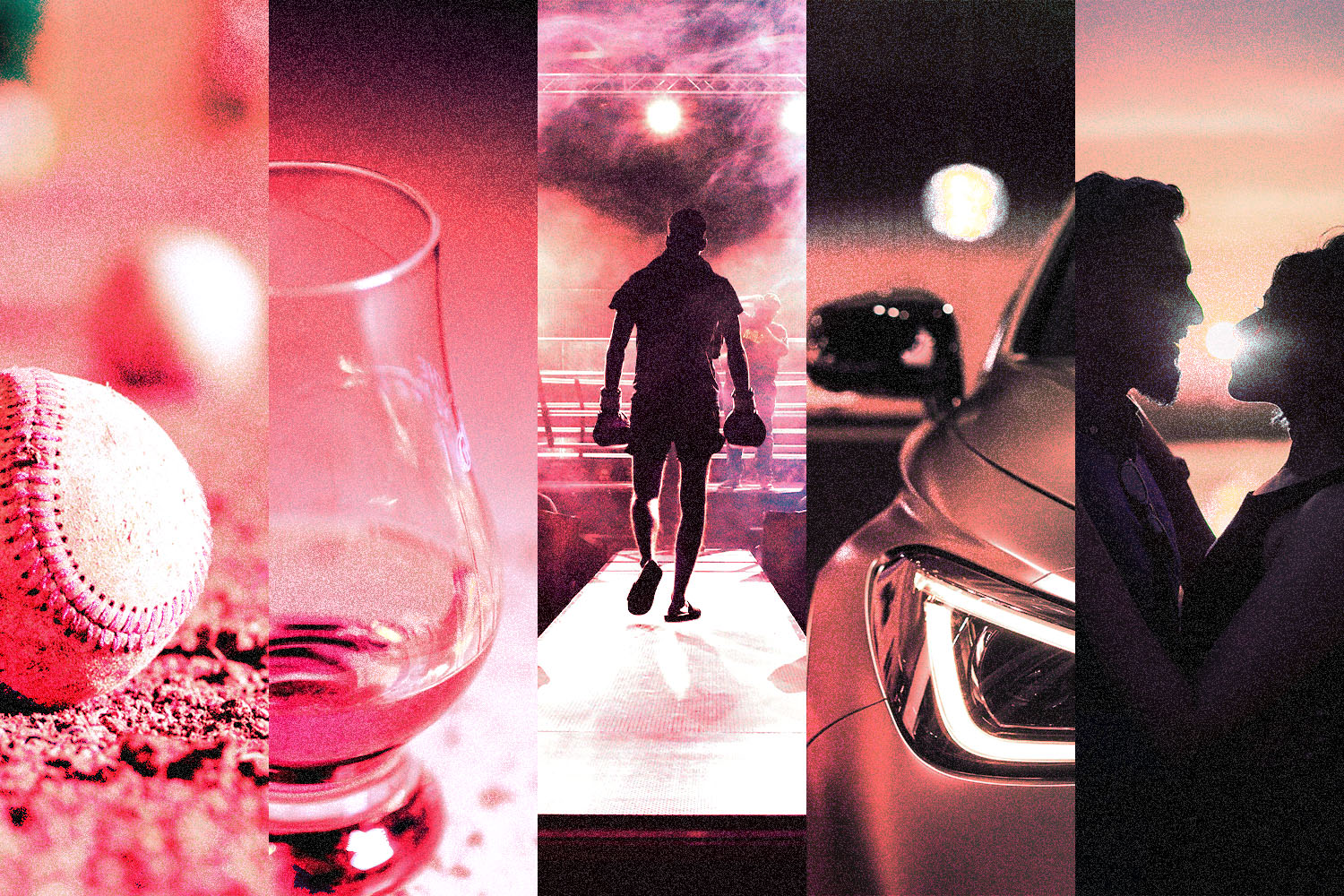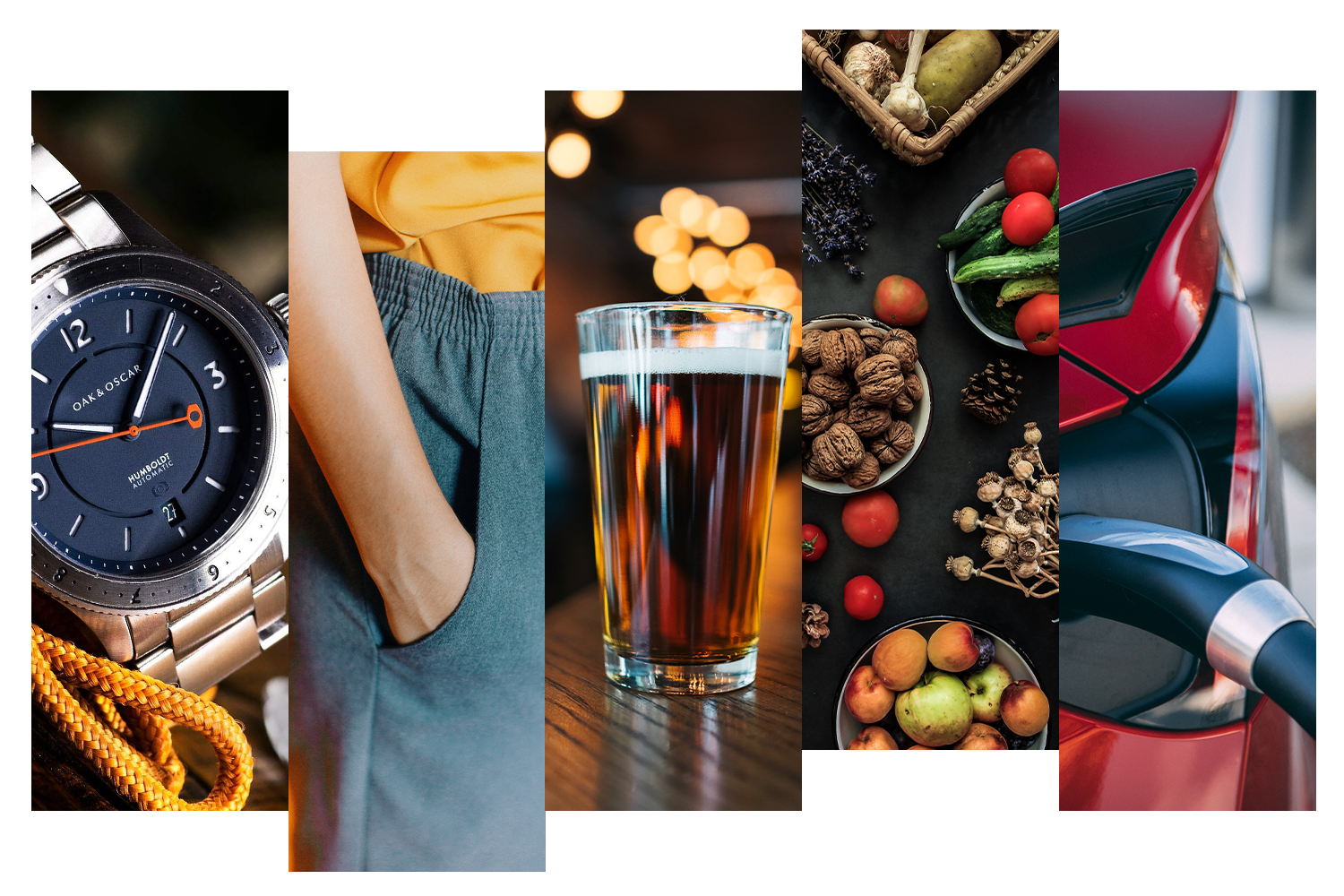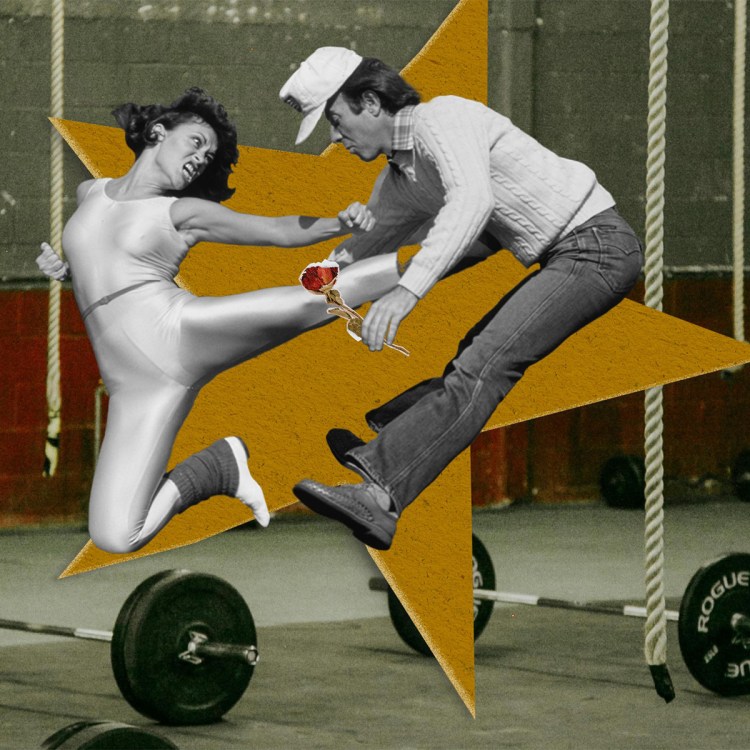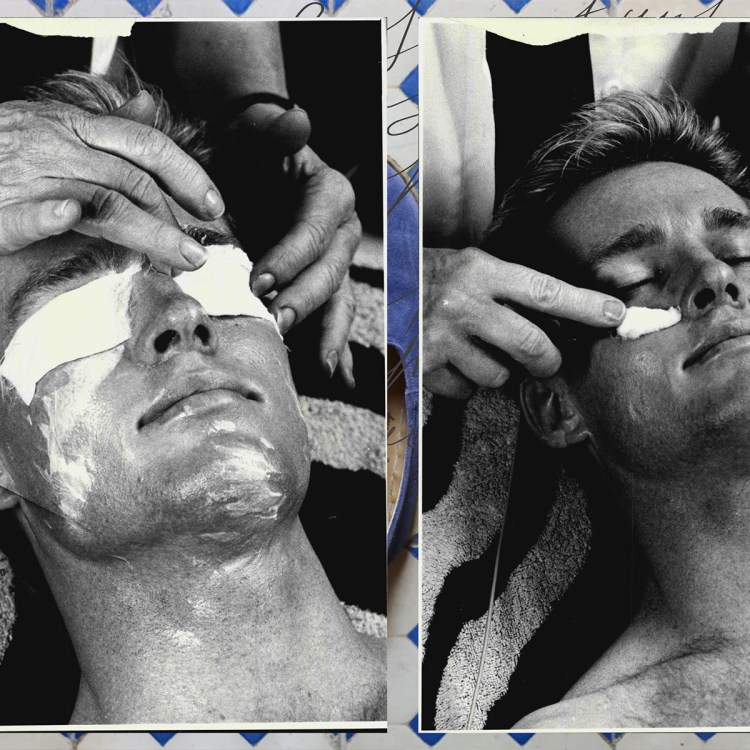We first published this feature back in 2014. It was one of those native-content jobbies. For Cadillac, I believe. Our assignment was to make a bunch of predictions about how American men’s lives would change over the year ahead, and one of those predictions must have involved buying a big bad American car.
The whole thing was captained by my old boss Steve Bryant, a very wise man to whom this website remains indebted to this day. I remember watching him furrow his brow and stare at his screen with great intensity as he tried to summon the Nostradamus from within himself. It’s a ritual I’ve become familiar with in the first week of January every year since, cracking jokes to my co-workers about the Sisyphean bargain I’ve made for us by matching the number of items on this list to the year that awaits us. If you think it’s hard to accurately prognosticate 22 trends, imagine how tough the task will be for InsideHook staffers in 2036, or 2150. (If one of you is reading this from some vague date in the future, looking for inspiration or perhaps just procrastinating, I apologize.)
Nonetheless, it’s a fun and worthwhile exercise. It helps lay the groundwork for our entire editorial mission over the coming 12 months by forcing us to identify the topics and conversations we believe will remain — or perhaps at some point become — most relevant.
Of course, things can go awry that nullify our predictions entirely. That certainly happened in 2020, and perhaps to a lesser degree last year, although I think we did pretty well.
What I can say for sure is that while certain aspects of our analog, quote-unquote real-world lives will continue to progress only in fits and starts as long as COVID-19 soldiers on, their virtual counterparts are evolving at light speed. You may not have time for NFTs and DeFi and TikTok and the metaverse, but by this time next year, or perhaps the year after that, their slow creep into our American lives is inevitable.
I’m not claiming to understand any of it better than you, but I hope this list, at the very least, can act as something of a user’s manual for the year that lies ahead.
–Walker Loetscher, Editor in Chief
1. Every new tech company will preach the gospel of Web3
The next big thing in technology is often announced but never solidified until years later. 8K is just starting to roll out and be useful/affordable, 5G is here but so far disappointing, and most mentions of NFTs still require a “what are NFTs?” explainer. So take a deep breath and recognize that whatever Web3 turns out to be, the real battle is going to be defining it. In simple terms, Web3 or Web 3.0 is just a decentralized internet based on blockchain — yes, Silicon Valley predicted this — but, wow, does it incorporate every single trend and buzzword. Entrepreneur‘s overview of Web3 includes “virtual and augmented reality, machine learning, artificial intelligence, blockchains, smart contracts and cryptocurrencies,” while influencers told the Economic Times it’ll center on NFTs and digital avatars. We’re all for moving away from big tech firms and their troublesome social media platforms, but a world where Bitcoin enthusiasts and influencers hold sway doesn’t really entice us any more than the current, top-down model. BTW, this all holds true as well for the metaverse, which is sometimes incorrectly lumped into Web3 but definitely has a similar problem defining what it’s all about. –Kirk Miller, Managing Editor
2. And one part of said metaverse will actually be cool right away: Fitness
Mark Zuckerberg envisions a lot of things happening in the metaverse. Like: “teleporting places with people,” and “sending a text message just by thinking about moving your fingers” and … sitting around tables. As sketched out as we were by his oddball presentation a few months ago, though, the future of Facebook could have a real, tangible and even exciting (?) impact on the world of fitness. Facebook, now Meta, owns Meta Quest, the VR headsets formerly known as Oculus. These headsets have access to almost 20 different immersive platforms thanks to a multi-billion dollar spending spree on the part of Meta. You can still kick your understanding of the metaverse down the road (as you have crypto and NFTs), but in the name of making fitness fun again, you should probably give it a try. Case in point: Meta’s most recent acquisition, the shiny, $400 million Supernatural, lets you meet your trainer on an Icelandic glacier and cut down “meteors” with “swords.” Watch this trailer right now. What’s not to like? –Tanner Garrity, Senior Editor
3. The sports gambling revolution will not be televised
… because it will be streamed. Next fall, Thursday Night Football will move exclusively to Amazon, where no one but Prime subscribers will be able to — legally — watch it. By the time that happens, sports gambling will — also legally — be available in more than half of the states in the U.S. via in-person wagers or bets made via mobile devices. Given those developments as well as the rise of cord-cutting and the increase of sports leagues offering their products on-demand via subscription services, the unholy trinity of sports books, professional leagues and content providers are inching toward a delicate marriage. In November, The Verge reported that “Disney, DAZN, FuboTV, Sling, and others have either launched betting companion features or have expressed an interest in entering the space in the US,” with a number of those services having integrated betting functions into app interfaces already. Some day soon, there will be an exclusive broadcast via a gambling giant like Draftkings that’s available only to subscribers, or a FanDuel stream that requires a wager to be placed in order to tune in. It could even come via Barstool Sports, a company that is desperately trying to ink a content deal with a major sporting league while opening physical sportsbooks at casinos around the country. –Evan Bleier, Senior Editor
4. Playboy is in for a reckoning
It’s no secret that Playboy has taken its share of heat from critics on all sides since its inception, but the brand has largely managed to dodge the modern reckoning one might expect a publication of Playboy’s reputation to face in the Me Too era. Since Hugh Hefner’s admittedly well-timed death mere weeks before the Harvey Weinsten accusations dropped in 2017, the once faltering brand has finally managed to pull-off a successful overhaul after a series of failed rebrand attempts throughout the latter half of the 2010s. Over the past few years, Playboy has effectively divorced itself from Hefner and his descendants, axed the original print magazine and rebranded as a modern, sex-positive platform with a progressive approach to sexuality. Today’s Playboy features gay male cover stars and collaborates with trendy brands on streetwear and other merch. The brand’s Instagram account regularly recircs photography and centerfolds from decades past, celebrating Playboy’s storied legacy while glossing over the less savory aspects of the brand’s history. The much-anticipated forthcoming documentary, Secrets of Playboy, however, seems poised to blow up Playboy’s newly PR-proofed image, taking a modern lens to the dark side of Hugh Hefner’s empire. Premiering later this month on A&E, the doc has the potential to summon the ghosts of Playboy past for a long overdue reckoning. –Kayla Kibbe, Associate Editor
5. And yet, boobs will make a comeback
Time, as they say on the internet, is a flat circle, which in this case means that boobs are back after falling to ass in the 2010s. From Kardashians and Brazilian butt lifts to anal sex, the past decade or so has been all about ass — big ones, in particular — while breasts largely fell by the wayside, nestled unobtrusively in the unlined bralettes that replaced the once-dominant push-up bra. Still, we all knew breasts would be back some day, and as we continue to settle into the 2020s, it seems that day is finally upon us — boob guys rejoice. But don’t get too excited, especially if you were a big Pam Anderson fan back in the day. This era of tits will look different from the obviously cosmetically altered Playboy aesthetic of the ‘90s and 2000s. Whispers of the inevitable boob renaissance started a few years ago with the rise of “big naturals,” signaling that these days, the resurgent popularity of big tits is more about embracing natural body types. This year we can expect to see more trending styles designed with ample cleavage in mind, as well as more boob guys finally crawling out of the woodwork to reclaim their pride in appreciating a stacked rack. And while I doubt ass is going anywhere, it’s safe to say the girls are back in town. –Kibbe
6. Awards shows will reach peak irrelevance
Some might argue that awards shows are already irrelevant, but 2022 should deliver the final nail in the coffin for the excessively long and self-indulgent ceremonies. Last year, the COVID-19 pandemic forced producers to postpone, scale back or otherwise tweak their events, with mixed results. (The Emmys in particular sparked controversy when Seth Rogen called out their supposedly lax safety protocols while presenting an award.) With Omicron surging through the country, 2022 looks to pose similar challenges. The Grammys, which are currently mired in a PR nightmare after nominating Louis C.K. and Marilyn Manson, just announced a postponement for the second consecutive year. And even if the Academy Awards are able to go on as planned in March, they’ll have to deal with the fact that — due to release dates getting pushed back and the fact that some people are still hesitant to go sit in a movie theater — the average person hasn’t seen most of this year’s Oscar contenders. (2021 was a year of box-office bombs, and even a film like Steven Spielberg’s highly anticipated West Side Story remake was a complete flop that had critics once again weighing in on “the decline of the movie theater.”) The Golden Globes, meanwhile, won’t even be televised this year, thanks to a handful of scandals at the Hollywood Foreign Press, and when this year’s nominations were announced, they went largely ignored, even by the nominees themselves. All of this should add up to record-low ratings and a decreased cachet; at a certain point, the institutions that hand out these awards will have to realize that it’s all more trouble than it’s worth and pull the plug entirely. –Bonnie Stiernberg, Senior Editor
7. Celebrity beauty brands will no longer be a girl’s club
The global beauty industry is worth $511 billion and is predicted to reach $716.6 billion by 2025. Despite being in an oversaturated market, female A-listers from the Kardashians to Rihanna have seen massive success with their own makeup and beauty lines for years. Now, as gender-neutral beauty brands become the mainstream, male celebs are starting to build their own beauty empires. A-Rod, Harry Styles, Machine Gun Kelly and Tyler the Creator are all among the gents who have dipped their toes into the space, releasing new makeup, skincare and nail polish lines in recent months. You can expect more celebrities to do the same this year; will 2022 be the year you put on some man makeup? –Logan Mahan, Assistant Editor
8. Heritage men’s brands will embrace the world of digital fashion
We’ve seen the value of the digital fashion space skyrocket over the last two odd years, with in-person facets of the industry — everything from storefronts to fashion weeks — largely out of commission. Beyond the continued increase in e-commerce spending, which is set to crest one trillion annually before 2025, there are telltale signs that plugged-in presence is more important than ever, and finally unavoidable, even for the titans of industry who traditionally drag their feet on such matters. The arrival of NFT’s as a legitimate medium (and moneymaker) marks one such change, as does the advent of the metaverse. Luxury resale, previously a secondary market run by independent vendors, seems poised for a massive boom, driven by expanded interest and an increased market for collectibles. The first wave of the great migration is already well underway: Dolce and Gabbana’s record-breaking NFT sale fetched millions in late summer 2021, while Balenciaga debuted its own video game before lending its Fall 2022 collection to the smash-hit Fortnite. Hell, even L.L. Bean is selling curated vintage via Instagram. Expect the final holdouts to take the plunge in 2022. – Paolo Sandoval, Assistant Editor
9. Strict style genres are finally going to die
The democratization of dressing has been a long time coming, but 2021 saw a reckoning with traditional style in a way that seems to signal the death of the old guard of fashion. In its place, a new reactionary canon of menswear embodies something completely different. Timothee Chalamet, Tyler the Creator, Harry Styles: these icons represent a new fluidity in fashion, one that responds not just to trends and ideas but also to the evolving notion of masculinity and its manifestation in clothing. Take Styles, for example; the Brit has worn everything from a hoodie and shorts to purple flair jeans to a sheer lacy blouse, and he’s been lauded for all. And it’s not just individuals who’ve evolved past a set of rules; Telfar Clemens’s eponymous label managed to outfit the Liberian Olympic team and release a pair of Uggs all in one year, while collaboration-heavy Gucci — who released a Hollywood-themed Spring 2022 and a GORP-y The North Face collection in the space of a few months — may have cracked $10 billion in profits for 2021. This year, we’ll see the walls that separate discrete style silos felled, by both brands and their clientele. – Sandoval
10. Mid-aughts nostalgia — yes, nostalgia — will take over storefronts and social feeds
2021 was the year Gen Z brought so-called Y2K fashion and beauty trends back, much to the chagrin of millennials. This year, however, we might be putting away the low-rise jeans and butterfly tops in exchange for Doc Martens and American Apparel tennis skirts. Certain TikTok trend forecasters have predicted the “Indie Sleaze” aesthetic that reigned supreme in the early 2010s (predominately on the blogging site Tumblr) to wage its revival very soon. The aesthetic is characterized by risqué and spontaneous flash photography, grunge fashion, music mash-ups and an affinity for now-vintage technology, and we’re already witnessing some signatures of the aesthetic making their comeback. Wired headphones have become the latest “it” accessory among Gen Zers, and the generation’s obsession with disposable cameras and capturing “in-the-moment” photos have been prevalent over the last couple of years. And yes, I know 2010 was only 12 years ago; you can take it up with the ever-accelerating trend cycle. –Mahan

11. But the revival of another old media format — vinyl — will hurt independent music
In 2020, vinyl records outsold CDs for the first time since the ’80s, and that trend continued in 2021, with weekly U.S. vinyl sales hitting a modern-era record during the week ending Dec. 23 thanks to the 2.11 million albums sold on wax during that seven-day period. But while that may be cause for celebration on its surface (People are still buying music! Physical media is back, baby!), it could actually cause problems for independent artists, labels and record stores. Pop stars like Taylor Swift and Adele, the latter of whom reportedly pressed more than 500,000 copies of her new album 30, have helped create a vinyl scarcity that’s forcing smaller artists to delay their album releases. And while it’s great that these massive pressings are getting a new generation of young fans into physical media, most of them are more likely to pick up their copy online or at a big-box store like Target or Walmart than they are at an independent record store. Those shops are already struggling to bounce back after being shuttered for a year due to the pandemic, and generally speaking, their devoted clientele isn’t particularly interested in picking up the new Adele record. Meanwhile, the releases they do care about are delayed or limited to a small number of copies thanks to supply chain issues. That puts small record stores in an extremely tough spot heading into 2022. –Stiernberg
12. Some of your favorite online writers will disappear completely
It’s no secret that the digital media bubble has been bursting for years now, with once-beloved sites and mastheads disappearing overnight as the formerly booming glut of ad revenue dries up and tensions between business interests and editorial staffs intensify. Fed up and burned out, some of the most talented writers and critics in the online space are leaving traditional media behind by banding together at subscriber-funded sites like Defector or launching their own solo careers on newsletter platforms like Substack. But those models pose their own problems. For one, they’re still vying for the same finite resources that every website wants a piece of: eyeballs, and the dollars that come with them. Not unlike the way in which OnlyFans’ increasing mainstream success could spell doom for the creators who built it, Substack has begun to attract marquee names (last month, George Saunders joined) who could put the little guys out of business. So where will they go next? If current trends hold, out of digital media entirely. Veteran journalists are increasingly decamping to the worlds of content marketing and streaming, with Netflix emerging as an especially aggressive poacher of editorial talent. –Loetscher
13. You will buy, or at least try to buy, a pickup truck
Pickup trucks have been hugely popular in the U.S. for a long, long time. Ford’s F-Series truck line has been the best-selling vehicle in the country since the ‘80s. But this year, automakers are opening up the class to everyone else, all of you who don’t consider yourselves “pickup people.” One on hand, there’s the Ford Maverick and Hyundai Santa Cruz, both pint-sized options for people who want the utility without the bulk or the hassle when you’re parallel parking. On the other, there’s the electrified Ford F-150 Lightning and Rivian R1T, for people who want the latest and greatest EVs. And the year of the pickup is already off to a blockbuster start: our Automotive Editor Benjamin Hunting chose the Santa Cruz as a favorite; preorders are rolling in at Rivian and the only question is if people will get their trucks in 2022 or 2023; and at Ford, the automaker announced it won’t be taking any more orders for the hybrid version of the Maverick until the summer due to overwhelming demand, and it is nearly doubling production capacity for the Lightning due to, you guessed it, overwhelming demand. Good luck out there to all my fellow sedan drivers. –Alex Lauer, Senior Editor
14. The non-alcoholic drinks market will be dominated by one trend
Booze-free spirits only make up 0.3% of the alcohol sector, but according to a recent report on Drizly’s sales, they’re growing exponentially. While the industry remains bullish on n/a options like Seedlip, Lyre’s and Athletic Brewing Company — which all appeal to a much younger demographic — a majority of retailers think the big breakout drinks category in 2022 will be a different non-booze option: CBD- and cannabis-infused drinks. We’re already fans of Cann, a mild THC soda, as well as Flyers, a full spectrum CBD drink that’s about as close to an actual cocktail you can get without booze (credit hiring an actual mixologist to play with flavors). Turns out we all still want a buzz of some kind. –Miller

15. The Black IPA will make a comeback
It’s been long enough since the Black IPA was a real presence on beer shelves that current drinkers of the hazy IPAs that have had the craft beer industry in a stranglehold for the past few years might be wondering how something they’ve never heard of in the first place could possibly make a “comeback.” So first a refresher: The Black IPA, which, yes, is a contradiction in terms, is a dark-colored beer made with roasted or caramel malts like a porter or a stout, but then hopped to the high heavens for added bitterness and assertive hop flavor — think citrus and pine, mostly. In the early part of the 2010s, the style was ubiquitous, but then it just sort of disappeared. The most popular versions were Firestone Walker’s Wookey Jack and Stone Brewing’s Sublimely Self Righteous, both of which were discontinued by 2016 and both of which have since been re-released. Wookey Jack came back as a limited release last year, but as of January 4th, Stone’s version is being distributed nationally. A few other smaller breweries have started dabbling in the style as well: Carton Brewing out of New Jersey, for instance, recently released Epitome, an absolutely massive take on the style coming in at 10.3% ABV. It’s a fun style that’s due for some love — especially at a time when the IPA market is cluttered with beers that look and taste exactly the same. –Mike Conklin, Executive Editor
16. You’ll go on a food vacation without leaving your home
In the old days, to get a slice of Italian beef deep-dish pizza from Lou Malnati’s in Chicago, most Americans would have to hop a plane, train or automobile to the Windy City. Now, thanks to long-range food delivery services such as Goldbelly or Tastes of Chicago that ship regional favorites across the country at a fairly decent mark-up, that’s no longer the case. Somewhat on the fringe a few years ago, these services have increased in popularity during the pandemic and more have entered the market to meet demand from quarantining foodies. As economics tells us, as supply increases, price tends to do the opposite. So while it may cost close to $70 to get a pair of Lou Malnati’s pies right now, that price should gradually go down over time. Getting some Nashville hot chicken delivered to Brooklyn is never going to be as cheap as getting some white-sauced street meat, but it’s going to be more affordable and easier to do in 2022. –Bleier
17. Someone you know will take part in a psychedelic psychotherapy session
Psychedelic-assisted psychotherapy (PAP) is no longer reserved for Burners in search of a spiritual reset in Peru. Over the last two years, the treatment (generally administered via ayahuasca, psilocybin, ibogaine or ketamine) has helped combat veterans grapple with PTSD and retired football players confront CTE. This year, look out for reports on the first ever study of psilocybin-assisted therapy for clinicians. Treatment could go a long way towards helping frontline workers manage the grief and stress of nearly two years spent treating COVID patients. Expect PAP to coalesce with our conventional understanding of therapy, too — Field Trip Health, which administers ketamine-enhance therapy, now has eight locations throughout the United States. Prospective patients can find out if they’re eligible for treatment after filling out a simple questionnaire and scheduling a 15-minute call. –Garrity
18. We will stop taking water for granted
Climate change is a disaster by itself, but it also exacerbates already terrible situations like heat spells, floods, wildfires and water scarcity. That last one may seem like an issue for people a world away or generations in the future, but as California imposes drought water rules, it appears this may be the year we all pay more attention to the impact climate change is having on our water supply, and how much we consume and waste of that increasingly precious resource. Of course droughts are part of the natural cycle of things in certain climates, but as experts in California have noted, the state “faces more extreme cycles of wet and dry conditions driven by climate change.” As for the larger megadrought that’s been affecting the Southwest for years, The New York Times explained last year that global warming “accounts for about half of the severity.” There are a million reasons to take climate change seriously, this is just the latest one. –Lauer
19. Consumers won’t be fooled by half-assed sustainability initiatives
If your Instagram feed is oversaturated with ads for “earth-friendly” pants, recycled tops and shoes designed to “save the planet,” welcome to the club. In recent years we’ve been exposed to an excessive amount of compelling messages that suggest brands we know and love are changing for the sake of our planet. But most of these attempts to make us feel good about what we buy are poppycock — and we know it. We’ve finally reached a point where “sustainability” means nothing; misleading impressions are now labeled as greenwashing. And as a result, we’re holding our once-preferred brands to a higher standard while we search for other labels that are truly making a difference. Don’t be surprised when the brands that are faking it suddenly begin to fold. –Cam Vigliotta, Associate Editor
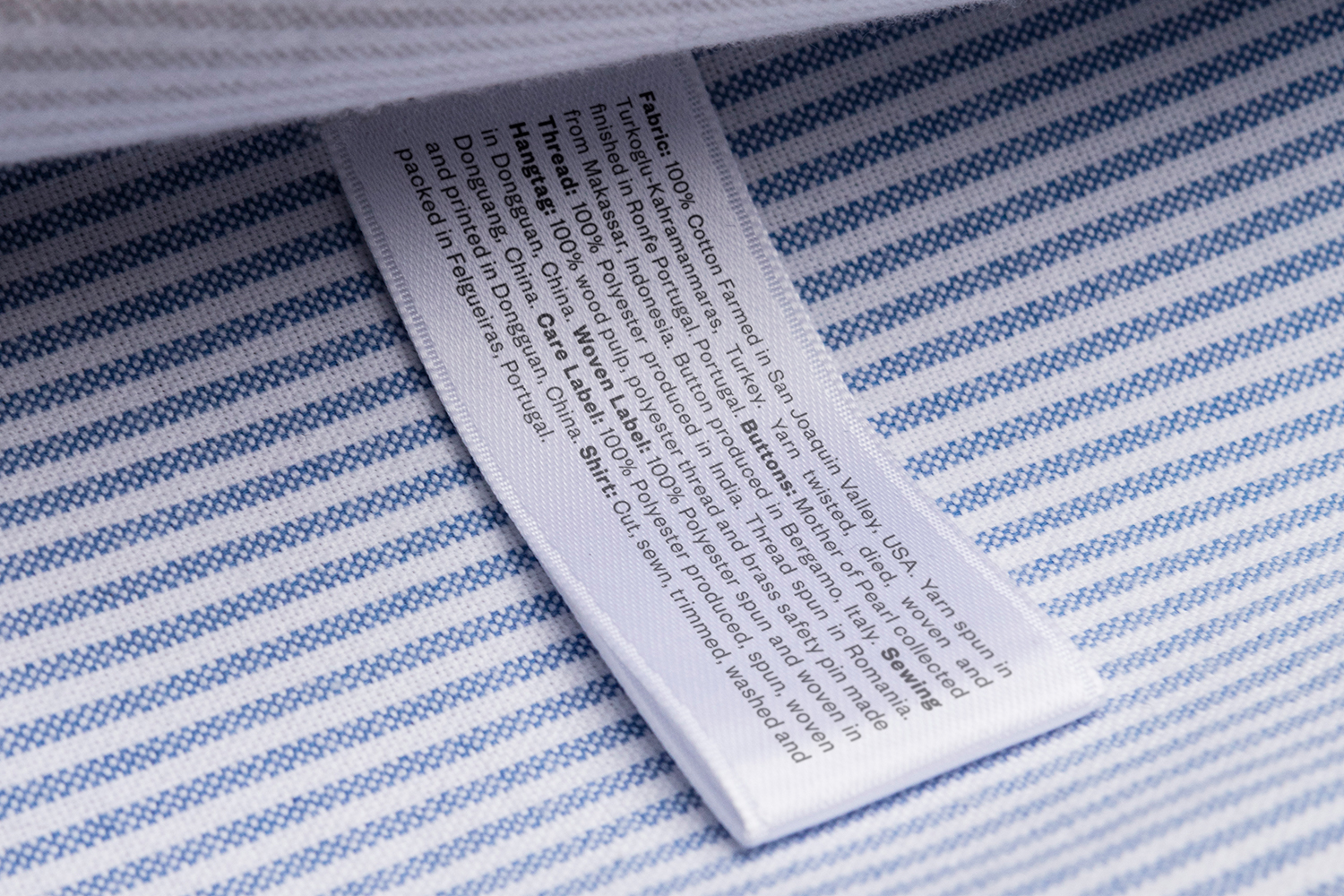
20. Finding peace and quiet outdoors will prove more difficult than ever
It was John Muir who once said “the mountains are calling and I must go.” Little did he know those same mountains would overflow decades later with thousands of new faces keen on engaging with the natural world. According to the latest Outdoor Participation Trends Report, more than 7 million more people participated in at least one outdoor activity between 2019 and 2020, and research suggests 2021 saw even more engagement among amateurs and experts alike. Fueled by an ongoing pandemic, those who are vaccinated, fully recovered from COVID or fed up with a lack of normalcy will continue to flock outdoors in greater numbers through 2022. And you, the harmless rambler keen on “getting away from it all,” will have to deal with record-breaking crowds, tourists and out-of-towners, all of whom are searching for the same wide-open spaces you are. –Vigliotta
21. You’ll go on a solo vacation
In 2021, there was a huge uptick in destination-style family reunions. After a year spent in isolation, Americans were desperate not only to spend time with far-flung loved ones, but to visit far-flung places again, too. But solo trips are shaping up to reign supreme in 2022. Due to all the updated requirements and sheer number of positive cases recently, group trips are getting riskier and increasingly harder to finagle. Additionally, after the better part of two years spent inside with SOs and children, it stands to reason that you could likely benefit from a little alone time. In fact, per a study conducted by Culture Trip in 2021, of the 2,000 Americans surveyed, one in three said that having to spend time with their partner after months of being at home together would be “the most annoying thing” when traveling again after the pandemic. In other words: if you’re craving a getaway, who not make it a solo one? Rest assured, you’re hardly the only one. –Lindsay Rogers, Assistant Editor
22. You’ll break up with a friend. But maybe you should reconsider.
Earlier this week, Patton Oswalt took to Instagram to defend an action that, in years past, probably would have come and gone without a murmur: he performed and then posted a photo with his friend of 30 years and fellow comedian Dave Chappelle. Chappelle, of course, has been mired in controversy in recent months for doubling down on a penchant for telling transphobic jokes in his most recent Netflix special. Oswalt, in turn, had to field a barrage of angry comments for what many of his followers perceived as a show of solidarity with someone whom they consider hateful. Oswalt’s response was measured and fair, detailing the intimacy of a lifelong friendship while expressing his own allyship with the LGBTQ community. He also had this to say about the potential consequences of turning his back on someone with whom he doesn’t agree: “Sometimes I wonder — did I and others cutting them off make them dig their heels in deeper, fuel their ignorance with a nitro-boost of resentment and spite?” This isn’t a unique situation. Earlier this year, Seth Rogen suggested in an interview that he’d cut ties with longtime friend and collaborator James Franco in the wake of sexual assault allegations against the latter.
Now, I don’t mean to equate Chappelle’s jokes — no matter how tasteless they were — with Franco’s more serious transgressions. But I do think these high-profile fraternal breakups are indicative of a greater trend. Americans everywhere are quicker than ever to sever ties with friends, whether it’s over an irreconcilable difference of ideology or because that friend has done or said something reprehensible. But what does this achieve, exactly? You can’t change someone’s mind — about vaccines, about misogyny, about whether Aaron Rodgers or Tom Brady is a more deserving MVP candidate — if you’re not even willing to pick up the phone. Progress is a product of collaboration, not division. This year, try to resist your urge to unfollow or cancel plans with your friend who’s lost the plot. Instead, engage with them. Listen to them. Hell, argue with them. Cutting them off entirely is the easy way out, and will only serve to reinforce their convictions. –Loetscher
The Charge will help you move better, think clearer and stay in the game longer. Subscribe to our wellness newsletter today.
